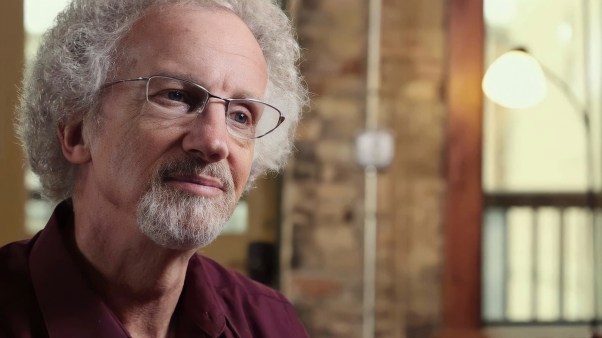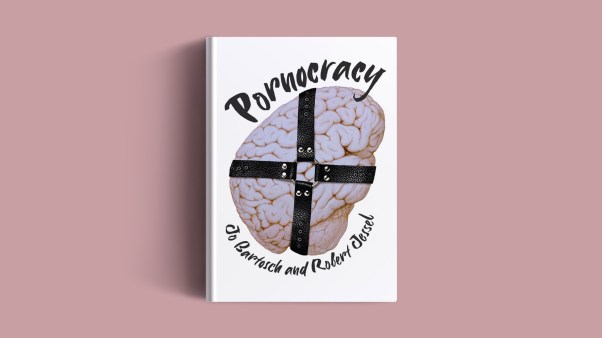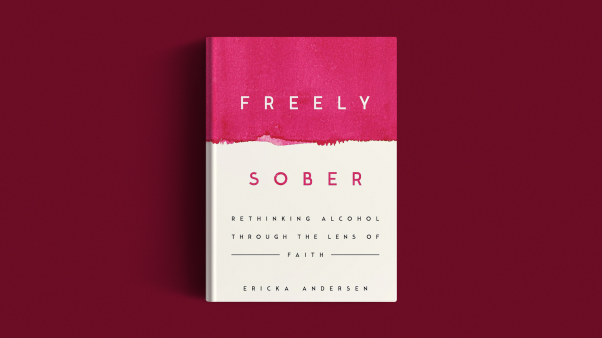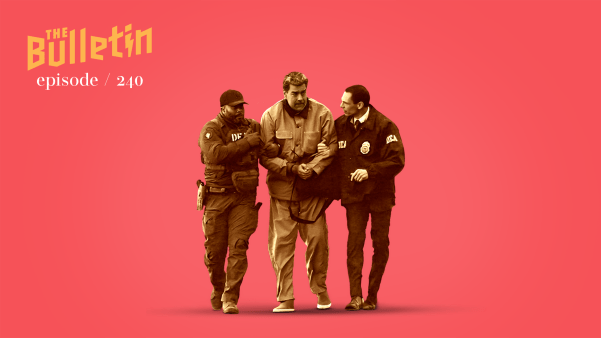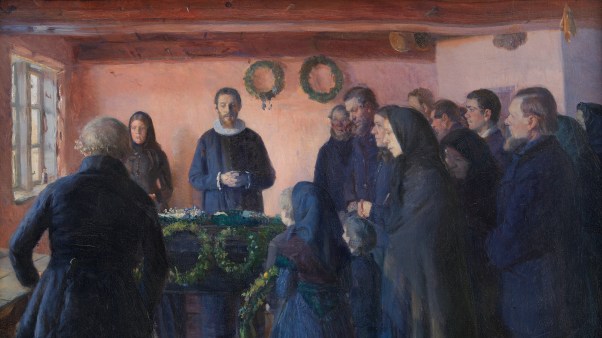In this Close Reading series, biblical scholars reflect on a passage in their area of expertise that has been formational in their own discipleship and continues to speak to them today.
There’s a Latin phrase that has become a part of the Book of Common Prayer: “Media vita in morte sumus.” In the midst of life we are in death.
As I age, one of the unexpected new realities in my life is the increasing amount of those “bad news” phone calls or emails that begin with “I am sad to say…” And as I age, more and more funerals occupy formerly empty spaces on my calendar. This should not come as a surprise. We are all aging. And aging, always, without exception, leads to death—morte sumus.
I have been consciously running from this reality. Or perhaps I have been subconsciously running from it by making myself overly busy in thinking, reading, speaking, writing, caring for family, and so on. Perhaps as an example of the lies we tell ourselves in order to keep moving, I have been the most optimistic man in the world, telling myself that death does not apply to me—or at least living as if it did not.
Of course, death has not been a stranger in my small circle. I have had whiffs, even if briefly, of that horrible thing. Its odor is so peculiar that you never forget it. When I was a teenager, a dear friend committed suicide with her father’s shotgun, only to be found later by her brother. It was at her funeral, under the unrelenting sun of a Caribbean island, that I first sensed—or felt—the smell of death. The evil and the power of it stopped me in my tracks.
A few years later, one of my closest cousins—a brother, really—overdosed on morphine and was also found dead by his brother. That smell came again, even through the phone, but it was most real at the funeral: the odor of death, its power, and our powerlessness before it. Since then, all my grandparents have died, and the smell of death has passed by, again and again.
But it’s only now, as I pass midlife and feel moments of fear while awaiting test results for my body, not others’ bodies, that I have come to realize that unless the Lord returns soon, I am going to die. In particular, 1 Corinthians 15 has shown me that even as my life is in a period of flourishing—media vita—the reality is that death is coming for me.
The apostle Paul knew death much closer (and sooner) than I. For one thing, he lived in a world with no antibiotics or vaccines or modern medicine. A simple infection may have been the beginning of the end.
As an apostle, he gave us several lists of his sufferings—called peristasis catalogs by ancient philosophers. One of these appears in 2 Corinthians:
We are hard pressed on every side, but not crushed; perplexed, but not in despair; persecuted, but not abandoned; struck down, but not destroyed. We always carry around in our body the death of Jesus, so that the life of Jesus may also be revealed in our body. For we who are alive are always being given over to death for Jesus’ sake, so that his life may also be revealed in our mortal body. So then, death is at work in us, but life is at work in you. (4:8–12)
Paul also experienced many brushes with death during his ministry (2 Cor. 11:23–30). In Jerusalem, he was almost killed by a dangerous mob (Acts 21:27–36). Later, on his way to trial at Rome, he almost drowned on an ill-advised trip in the Mediterranean Sea (Acts 27).
And Paul was not only an apostle but also a pastor. This meant he likely often sat and prayed with those who were about to die (Phil. 2:25–27). He would have gone through the funeral rites of many brothers and sisters in the Lord. According to Acts 20:9–10, Paul brought back to life a young man who had succumbed to sleep as his sermon went long. The young man fell from a window and likely died on impact. Paul, like a prophet of old, placed his body on the young man, bringing him back to life.
Paul’s view of his own death shows up in Philippians, where he went so far as to write, “For to me, to live is Christ and to die is gain. If I am to go on living in the body, this will mean fruitful labor for me. Yet what shall I choose? I do not know!” (1:21–22).
While Paul had smelled the stench of death, both in the deaths of others and in his own near-death experiences, it is fair to say that the death that most occupied Paul’s reflections was that of Jesus. Paul was obsessed with the death of Christ.
Reading Paul’s letters allows us to see someone who, with the aid of the Holy Spirit, was trying to make sense of Christ’s death on the cross: Why did Jesus have to die if he was truly the Messiah? Why did he have to die, of all places, on a cursed cross? What did this ignominious death have to say about Jesus’ identity? What did his death tell us about Jesus’ relationship with God? What did it have to do with Israel, the world, and Paul himself?
 Differences in church polity and doctrine continue to make major U.S. Protestant denominations distinguishable from one another. But these days, most of them look the same with respect to one reality: financial trouble.At its August Churchwide Assembly, the Evangelical Lutheran Church in America announced that income was down 0,000 compared to the first six months of last year. The ELCA reduced its operating budget by a million dollars to .9 million.The United Methodist Church’s chief finance agency announced in July that contributions for the first half of 1993 had dropped by .2 million compared to last year. Similar financial woes have plagued the Episcopal Church of late, the Presbyterian Church (USA) (PCUSA), and the Southern Baptist Convention (SBC).In 1991, the PCUSA’s highest governing body passed a measure calling for a balanced budget by 1995. But by 1992, it was clear that the church, short of drastic action, would run out of reserves by the end of this year. Drastic action came a few months ago in the form of a million budget slash (to about 3 million), resulting in staff reductions of 25 percent at the denomination’s Louisville headquarters.The SBC, during the first 10 months of its 1992–93 fiscal year, experienced a decline of .8 million, or about 1.5 percent, in giving to its Cooperative Program, a common pool that finances SBC major missions, education, and administrative efforts. Last year’s Lottie Moon Christian offering, the major source of support for SBC foreign missions, was down from the previous year, only the second time that has happened since the Great Depression.Although the 1.5 million-member American Baptist Churches in the U.S.A. (ABC) has been able to avoid major cutbacks in staff and programs, spokesperson Richard Schramm states, “These are financially challenging times.”Why the church?Specific causes for the shortfalls vary from denomination to denomination, although observers point to some common factors. Spokespersons, by and large, tend to blame the sluggish economy, while critics point to a lack of communication and trust between bureaucracies and grassroots.“United Methodists are not holding back their money,” says Steve Beard, executive editor of Good News magazine. “They’re just holding it back from the denomination.” Beard says United Methodists are increasingly supporting the unofficial Mission Society for United Methodists rather than the missions efforts of, for example, the UMC’s General Board of Global Missions.A lack of trust in denominational structures clearly appears to be at the heart of the crisis facing the PCUSA. According to Jerry Van Marter of the Presbyterian News Service, per-capita giving in the denomination has increased in recent years. But a growing number of churches and presbyteries are registering their concern by designating contributions for programs they support, as opposed to giving to the denomination in general. In fact, Van Marter says, the million reduction came totally out of the church’s general operating budget, reducing it to million.Virtually every year at the PCUSA general assembly, someone tries to persuade the church to save millions of dollars by cutting back the meetings to every other year. But that, according to Van Marter, will not happen. “If the problem is a lack of trust between the leadership and people in the pews, that problem is exacerbated if you cut back on the yearly general assembly. This would simply turn more responsibility over to denominational leaders.”Baby boom effect?According to Marv Knox, managing editor of the Western Recorder, the newspaper of the Kentucky (Southern) Baptist Convention, the SBC shortfall is due in part to churches channeling finances through alternative Southern Baptist organizations that oppose the conservative direction of the SBC in recent years.Knox also cites what he believes is a trend among baby boomers who, as a generation, tend to want to have more knowledge about and control over how their money is spent. This, he says, translates into more money staying at the local level.Sylvia Ronsvalle, executive vice-president of the Christian research organization empty tomb, inc., predicts the virtual extinction of support for denominational structures by the middle of the next century as younger folk take an increasingly “consumerist” approach to church giving.The SBC is in the process of responding to this trend. According to Art Toalston of Baptist Press, both the SBC Home and Foreign Mission Boards are exploring strategies intended to “provide Southern Baptists with more of a sense of personal involvement in the programs they support.”By Randy Frame.
Differences in church polity and doctrine continue to make major U.S. Protestant denominations distinguishable from one another. But these days, most of them look the same with respect to one reality: financial trouble.At its August Churchwide Assembly, the Evangelical Lutheran Church in America announced that income was down 0,000 compared to the first six months of last year. The ELCA reduced its operating budget by a million dollars to .9 million.The United Methodist Church’s chief finance agency announced in July that contributions for the first half of 1993 had dropped by .2 million compared to last year. Similar financial woes have plagued the Episcopal Church of late, the Presbyterian Church (USA) (PCUSA), and the Southern Baptist Convention (SBC).In 1991, the PCUSA’s highest governing body passed a measure calling for a balanced budget by 1995. But by 1992, it was clear that the church, short of drastic action, would run out of reserves by the end of this year. Drastic action came a few months ago in the form of a million budget slash (to about 3 million), resulting in staff reductions of 25 percent at the denomination’s Louisville headquarters.The SBC, during the first 10 months of its 1992–93 fiscal year, experienced a decline of .8 million, or about 1.5 percent, in giving to its Cooperative Program, a common pool that finances SBC major missions, education, and administrative efforts. Last year’s Lottie Moon Christian offering, the major source of support for SBC foreign missions, was down from the previous year, only the second time that has happened since the Great Depression.Although the 1.5 million-member American Baptist Churches in the U.S.A. (ABC) has been able to avoid major cutbacks in staff and programs, spokesperson Richard Schramm states, “These are financially challenging times.”Why the church?Specific causes for the shortfalls vary from denomination to denomination, although observers point to some common factors. Spokespersons, by and large, tend to blame the sluggish economy, while critics point to a lack of communication and trust between bureaucracies and grassroots.“United Methodists are not holding back their money,” says Steve Beard, executive editor of Good News magazine. “They’re just holding it back from the denomination.” Beard says United Methodists are increasingly supporting the unofficial Mission Society for United Methodists rather than the missions efforts of, for example, the UMC’s General Board of Global Missions.A lack of trust in denominational structures clearly appears to be at the heart of the crisis facing the PCUSA. According to Jerry Van Marter of the Presbyterian News Service, per-capita giving in the denomination has increased in recent years. But a growing number of churches and presbyteries are registering their concern by designating contributions for programs they support, as opposed to giving to the denomination in general. In fact, Van Marter says, the million reduction came totally out of the church’s general operating budget, reducing it to million.Virtually every year at the PCUSA general assembly, someone tries to persuade the church to save millions of dollars by cutting back the meetings to every other year. But that, according to Van Marter, will not happen. “If the problem is a lack of trust between the leadership and people in the pews, that problem is exacerbated if you cut back on the yearly general assembly. This would simply turn more responsibility over to denominational leaders.”Baby boom effect?According to Marv Knox, managing editor of the Western Recorder, the newspaper of the Kentucky (Southern) Baptist Convention, the SBC shortfall is due in part to churches channeling finances through alternative Southern Baptist organizations that oppose the conservative direction of the SBC in recent years.Knox also cites what he believes is a trend among baby boomers who, as a generation, tend to want to have more knowledge about and control over how their money is spent. This, he says, translates into more money staying at the local level.Sylvia Ronsvalle, executive vice-president of the Christian research organization empty tomb, inc., predicts the virtual extinction of support for denominational structures by the middle of the next century as younger folk take an increasingly “consumerist” approach to church giving.The SBC is in the process of responding to this trend. According to Art Toalston of Baptist Press, both the SBC Home and Foreign Mission Boards are exploring strategies intended to “provide Southern Baptists with more of a sense of personal involvement in the programs they support.”By Randy Frame.Paul was a theologian of the Cross. He constantly proclaimed the death of Christ on the cross. In Roman culture, such proclamation was foolishness, but for Paul and the early Christians, it was good news. Why? Because the crucifixion of Jesus was followed by his glorious resurrection, where death was once for all defeated.
The New Testament is filled with expressions of the resurrection of Jesus. At times the teaching of it is embedded in a parable; at other times it is symbolized by apocalyptic images. However, the most detailed, analytic explication of the Resurrection is found in 1 Corinthians 15.
After spending about a year and a half in Corinth planting and building up its churches, Paul moved on to continue his missionary work elsewhere. It is clear that Paul’s departure severely weakened the once-vibrant churches. Shortly after he left, they were consumed with a way of seeing the world that was far from what Paul had taught them. Their behavior was actually not very different from that of unbelievers. They were full of division, pride, sinful expressions of sexuality, selfishness, and misuse of spiritual gifts. All this showed that the Corinthians lacked the essence of believers in Christ—love as it had been expressed on the cross.
In writing to the Corinthians, Paul had to go back to basics: the gospel itself. Therefore, he began chapter 15 by reminding the Corinthian church of the content of the gospel and its trustworthiness. “By this gospel you are saved,” he said, “if you hold firmly to the word I preached to you. Otherwise, you have believed in vain” (v. 2).
Then he spelled out the gospel: “that Christ died for our sins according to the Scriptures, that he was buried, that he was raised on the third day according to the Scriptures” (vv. 3–4). The Corinthians had developed problematic thinking about this gospel, which they had previously received as a word of salvation. In chapters 1–4, Paul corrected their view of the crucifixion of Jesus. And in chapter 15, he corrected their view of his resurrection.
It appears that their problem with the Resurrection was twofold. First, some were making the claim that resurrection was not possible (15:12–19). Paul contradicted this claim by reminding them that Christ himself had been raised from the dead! This was what the Scriptures had promised and what the apostles (Paul included) and many others had witnessed. Since Christ had been raised from the dead, it was simply false to claim that resurrection was impossible.
It is of fundamental importance that we pay attention to how Paul argued for the reality of the Resurrection. In particular, we should note that Paul did not use metaphysical arguments. He did not argue, as some philosophers of religion might have, that resurrection is part of the nature of reality, that after death there is always new birth.
To be sure, Paul made use of the natural world as an aid to explain how resurrection happens. But this is not the foundation of his argument. Instead, we should view his application of nature as “secular parables of the truth,” to quote Karl Barth.
Paul did not believe in proving the resurrection from observing the seasons of the year, for example. Just because the death of winter is always followed by the life of spring does not mean that this movement from death to life is stamped into the very fabric of reality and that resurrection therefore exists. In this case, the resurrection of Jesus would simply be a small part of a greater reality.
Instead, Paul argued from the specific to the general. Resurrection exists because Jesus was raised from the dead, not the other way around. For Paul, reality was Christocentric. For the believer, joy always comes after suffering and Friday is always followed by Sunday because this is how it was with Jesus.
The second problem the Corinthians had with resurrection appears to be how it happened. How is it possible that after the decomposition of these frail bodies we will receive glorious, incorruptible bodies? How is it possible that we will be raised immortal—not in some vague spiritual way but materially? This is indeed a difficult (even impossible!) question, and Paul did not answer it as such.
I will be the first to admit that it is difficult for me to believe in something when I do not understand how it works. But that does not mean that it does not work. I do not understand how a huge airplane can take off and land and travel through the skies the way it does. But it does!
To help the Corinthians overcome their unbelief, Paul gave them an analogy: When a seed goes into the ground, it looks like one thing. Then, after going through putrefaction, it comes out looking different. It is a different body. In a similar way, Paul said, the human body goes through corruption and putrefaction but then—by the power of God—is raised in a new material, glorious body of a nature we do not understand.
If we were to summarize 1 Corinthians 15, then, we could do so with one question: Do you believe in the power of God? Because Paul believed in the power of God, the God who raises the dead, he concluded the chapter triumphantly:
For the perishable must clothe itself with the imperishable, and the mortal with immortality. When the perishable has been clothed with the imperishable, and the mortal with immortality, then the saying that is written will come true: “Death has been swallowed up in victory.”
“Where, O death, is your victory?
Where, O death, is your sting?”
The sting of death is sin, and the power of sin is the law. But thanks be to God! He gives us the victory through our Lord Jesus Christ. (vv. 53–57)
This is impossible to understand, but Paul believed it. He believed it because he believed in the power of God as it was manifested in the resurrection of Jesus. Augustine observed about this passage, “People are amazed that God, who made all things from nothing, makes a heavenly body from human flesh. … Is he who was able to make you when you did not exist not able to make over what you once were?”
Death is real. Our bodies are breaking down, decomposing. However hard we try, the highway of natural life moves in only one direction: from life to death. And sometimes, even in the midst of physical flourishing, death makes its appearance in accidents, unexpected diagnoses, and the violent taking of life. Media vita in morte sumus.
My hope is that this body, which each day diminishes in strength, will be raised immortal with a body like that of Jesus. He has gone ahead of me as the firstfruits. I will follow him, because his love, communicated in the gift of resurrection, is stronger than even death.
We can live in the knowledge that there is a greater reality than death itself contained in the resurrection of Jesus Christ. United with him by faith, we know—even while we doubt and suffer—that this perishable will be clothed with the imperishable.
Osvaldo Padilla is professor of divinity at Beeson Divinity School of Samford University.






